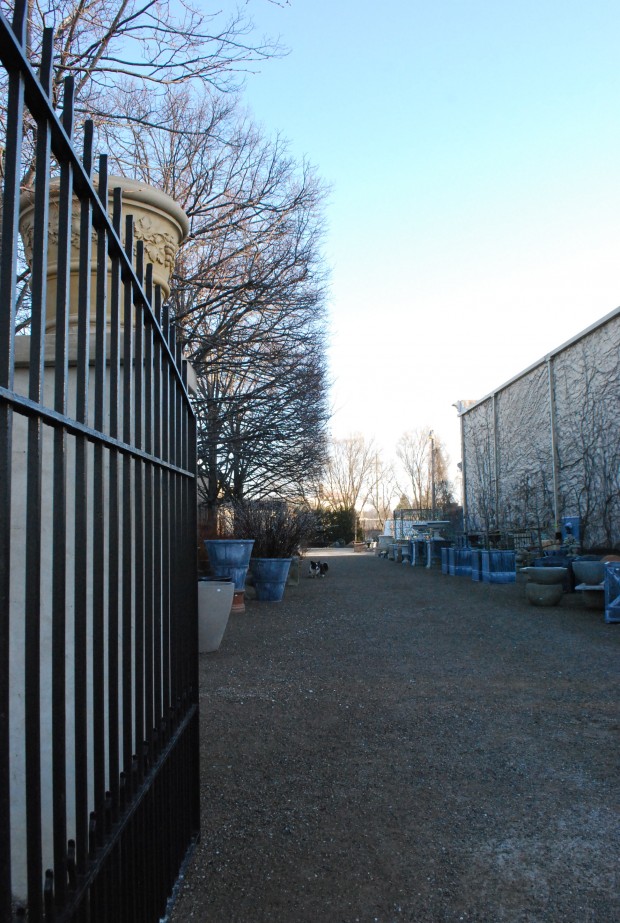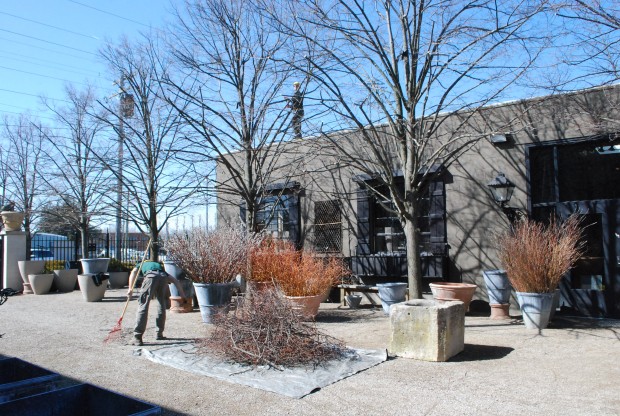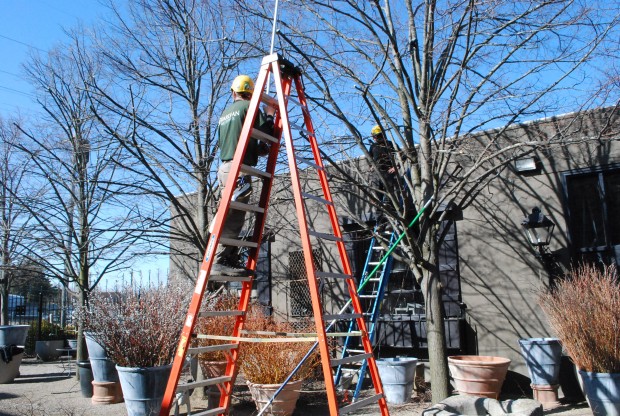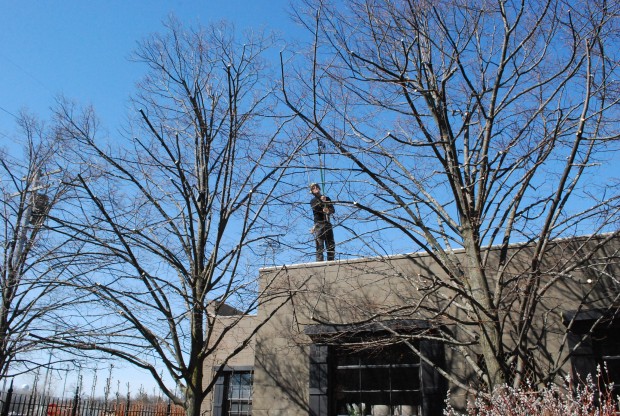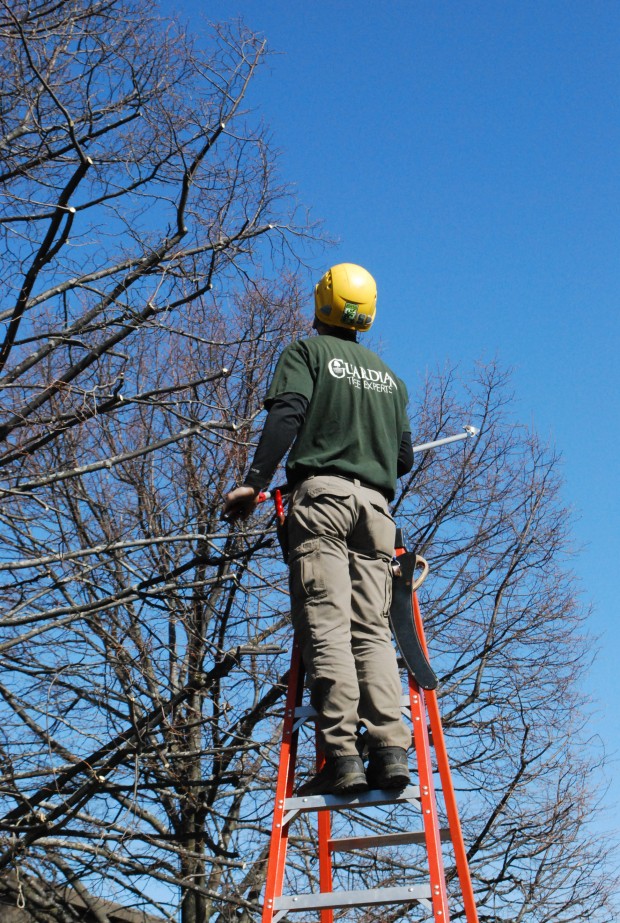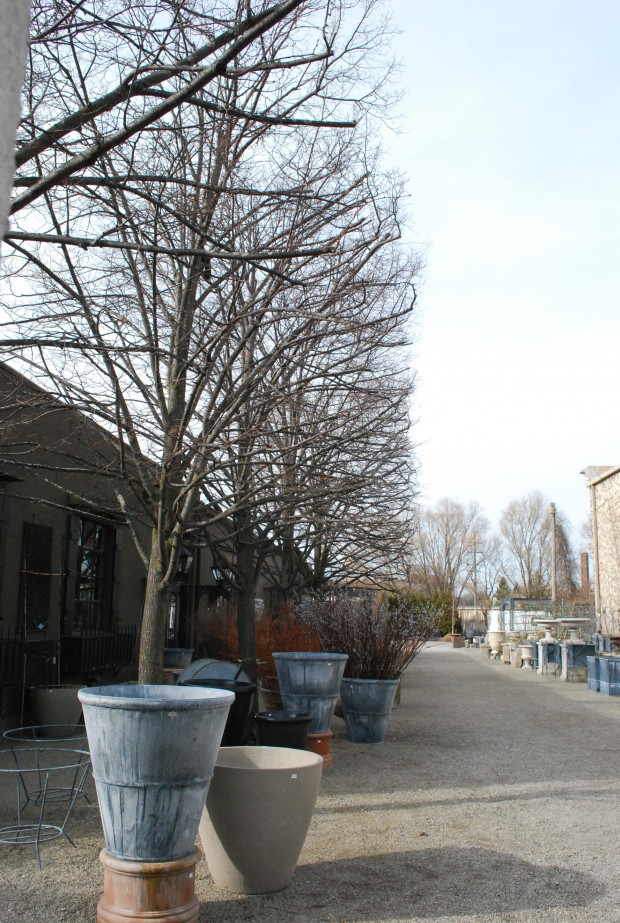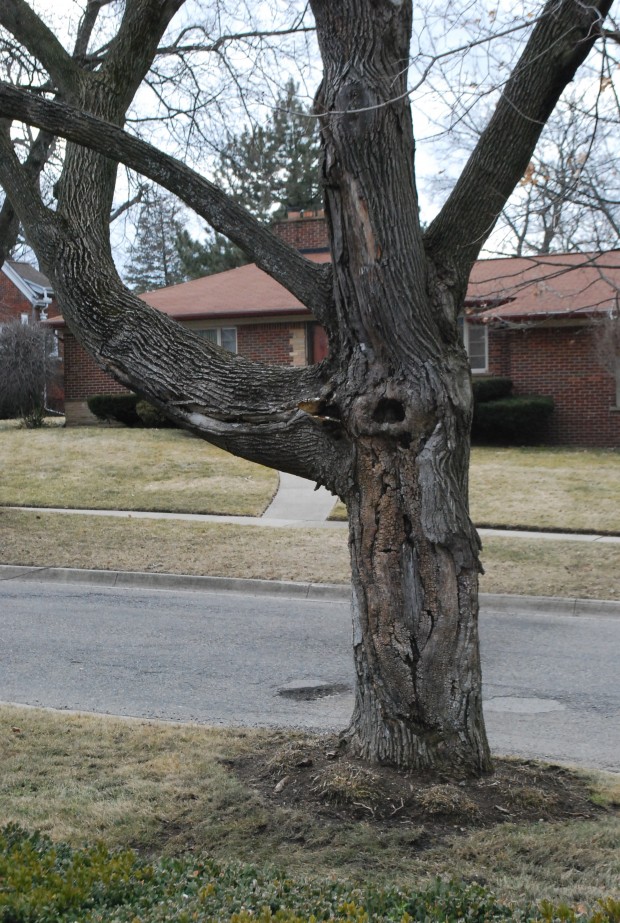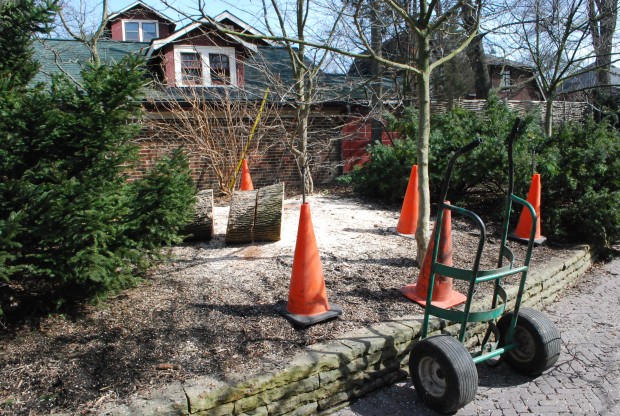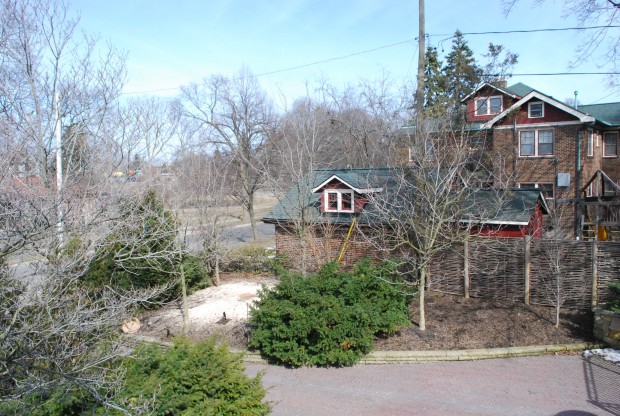A good client has lost 6 very big and very old trees in the terrible storms we have had this season. The damage to her landscape is considerable. The remaining old trees in the same proximity look lonely, and off center. She is asking me what to do. I haven’t answered her yet, but she will most likely need to start over. Just yesterday we had a storm, wind driven and rain laden, blow through such that Detroit Edison counts it as their 10th worst storm on record. Luckily my neighborhood was spared. At the shop, a giant limb of a willow sheared off, and landed on our neighbor’s roof. Lots of people lost their power in the greater Detroit area. The big winds and the big rain took down trees in a wide range of communities. Big trees. As in, the bigger they are, the harder they fall. Miraculously, no person was injured.
Big storms are the plague of the weak and the big old trees. A sapling can gracefully bend under the duress of a straight line wind. No harm done. Old trees whose wood is stiff with age do not bend-they break. The canopy of a big tree is like a a giant sail. A wind that is too strong can stress that trunk beyond reason. For certain, large caliper trees that are snapped off above the ground, or uprooted in the height of a storm are victims of the unpredictable direction and incredible strength of that force we call nature. If you have ever seen a big tree uprooted or snapped off you understand the meaning of the word “force”.
Other trees in poor condition go over or shed big limbs without much in the way of protest. A lack of health, or a lack of regular maintenance makes them a target for the effects of severe weather. There are a lot of limbs on the ground now. The pruning that violent nature does is extreme. No judicious or clean cuts. I suppose storm pruning is effective. Any limb that is weak, or growing at an unsustainable angle gets a haircut in a matter of seconds. There is no time for a second opinion.
Our trees are our biggest plants. Old trees are up there, dealing with the brunt of the weather. All kinds of issues challenge their health. As they age, they need care. Maples in the tree lawn develop girdling roots. Sun loving deciduous trees in too much shade grow towards the light. Lots of our evergreens are being threatened by needle cast disease. I could go on and on about the illnesses of trees, but that is not my point. Trees need a gardener in charge to look after them, routinely-unless being at the mercy of nature is a place you don’t mind being.
My city does no pruning or maintenance on the street trees. I would guess this is a budget issue. So the three trees in the tree lawn on my corner lot that they finally took down this spring – I had to make a case that not to take them down would expose people to serious danger. They finally agreed. They were all maples, more than 2/3rds dead, suffering from girdling roots and seriously weakened by fungus. The maples were a poor choice to begin with. Their roots need room. They are much too large growing to restrict to the space in an urban tree lawn. Years of neglect made them a disaster waiting to happen. One giant limb at a just about horizontal angle arcing over my street featured a home trunk entirely rotted on the interior. That tree worried me to no end. I am glad it is gone now, before it collapsed under its own weight. In my next life I would like to be in charge of street tree plantings. Not that I have an agenda proud of the history of street trees in my urban community. I just have a big love for trees, and want to see them take hold and thrive. Old trees ask for some care. Loosing one – grievous. Certain neighborhoods in Royal Oak have incredibly gorgeous and substantial London Plane trees, thriving. These trees have been looked after all along the way.
An landscape asks for a regular hand. An aging landscape asks for a better than regular hand. There is no substitute for regular care. This is not to say that regular care will insure you will never have storm related damage to your trees. But it will provide them a fighting chance.
As for my dead maples, I have had the stumps ground down 24 inches. I had to transplant all of the hosta planted around them like skirts. I raked and seeded each 6′ diameter circle of bare dirt. Now it’s time to think about how I will replant that tree lawn. All living plants have a life span. Long and short. Expected, and unexpected. Looking after a property also means starting over.

